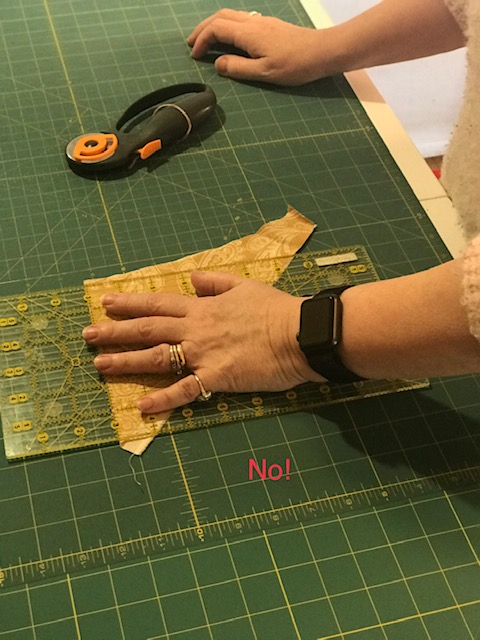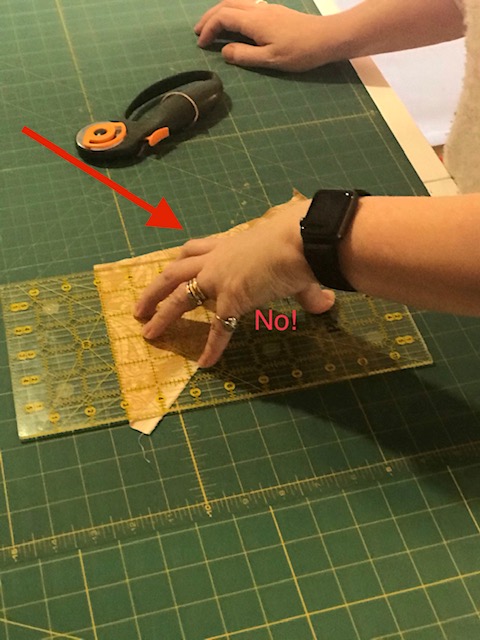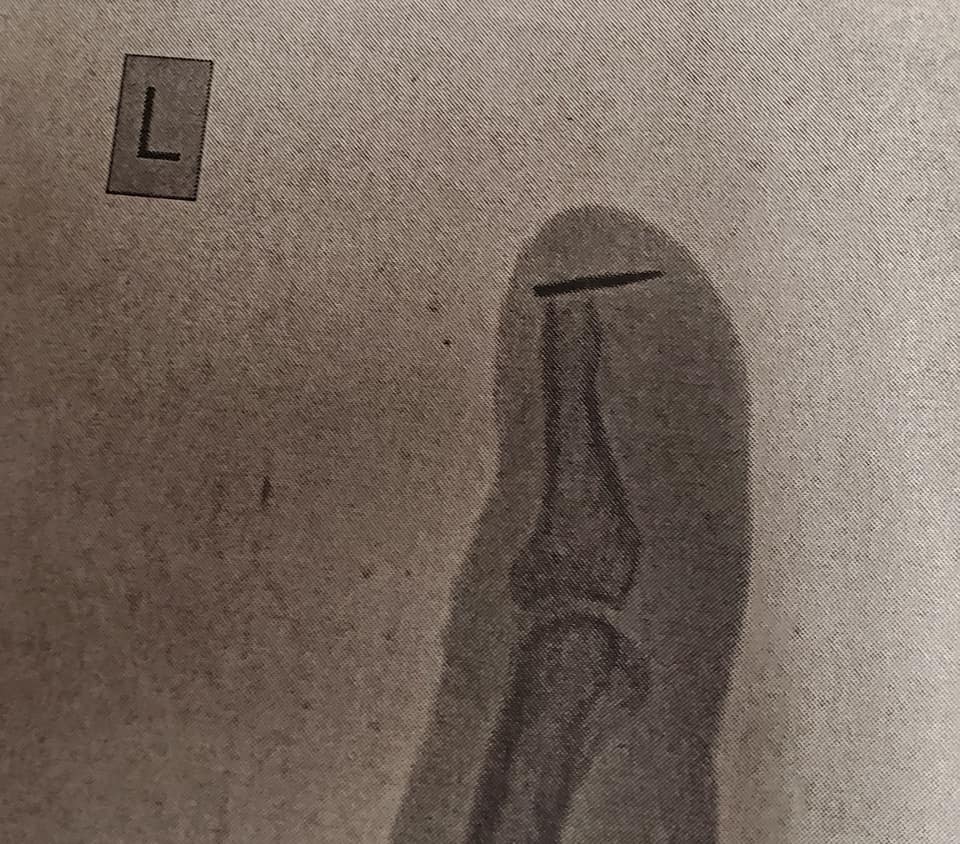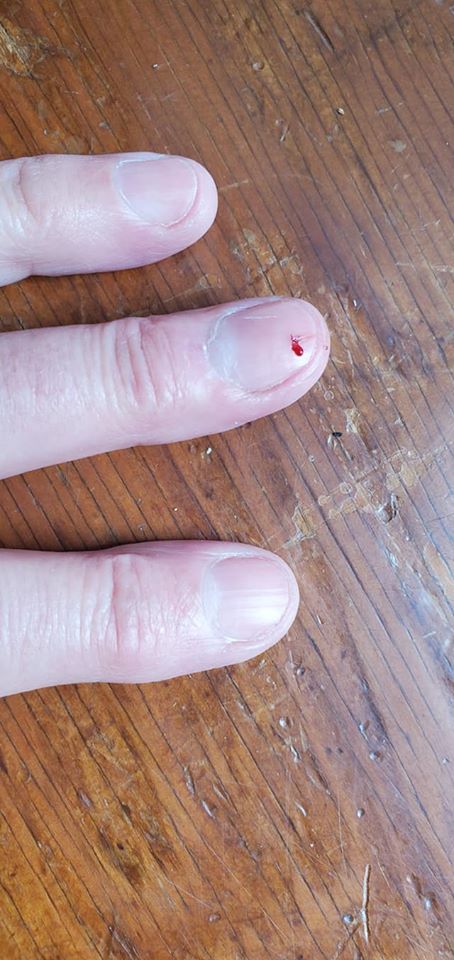Quilting is such a relaxing and fun hobby (and business for some) that it’s easy to forget that we’re using tools that can cause painful injuries. We’ve all stepped on pins and stuck ourselves, that’s a given. The worst pin sticks in my experience are the ones that go under the fingernail – OUCH. But there are more serious injuries that can occur.
Cutting with a rotary cutter
Dull blades are as dangerous as dull knives. When cutting with a dull rotary cutter, we must press harder and with more effort moving forward, that it’s easy for the blade to slip and cut. Also, forgetting to close the cutter after using it can lead to you knocking against the sharp blade or it getting knocked off and cutting your leg or foot on the way down.
Some quilters have also lost the tip of a finger to a rotary cutter. If you’re not holding the ruler correctly, your finger may stretch over the edge and you can catch it with the blade as you make your cut. I’ve seen gloves, similar to what butchers wear, sold to help protect your fingers while cutting fabric.

Wrong 
Wrong again
Other cutting injuries occur when you stretch too far – you should never cut anything you need to stretch to reach. Stop when you’ve gotten as far as your natural reach and then move the fabric closer to continue sewing. This blog post discusses safe cutting practices.
Sewing over your finger
This is one of my fears. I’m as careful as I can be, but I’m terrified I’ll do this. You can sew into your finger with a regular sewing machine or a longarm. The result is the same. The needle can go through your nail and embed into your finger. If you’re really unlucky, the needle may break off, leaving a part inside the finger that cannot be removed.
Michele, a longarm quilter, posted these photos of her injury. The pictures are posted with her permission.
The needle from her machine ran through her fingernail and broke off. The doctor in the emergency room couldn’t get it out so she is scheduled for surgery to have it removed.
If you use a regular sewing machine, don’t give in to temptation to use your finger to nudge that last little bit of fabric underneath or to hold it down. That is what a stiletto is for. If you don’t have a stiletto, a chopstick, even a toothpick would work – but not your finger. If you’re a longarmer, it’s a bit more complicated because it’s easy for your finger to get close to that needle going so very fast. So it’s extra important to be vigilant.
Back and neck injuries
Quilting is a lot more physical than people may imagine. If you machine quilt or use a longarm, there is a lot of manipulation that goes into moving the quilt and the larger the quilt, the harder it is. I was loading a king size quilt on my frame the other day and I was exhausted after given all the effort it took to get the roll of batting out, cutting it, loading it, and so on.
Hand quilting isn’t as tough physically (other than finger pokes), but you still need to sew the top together and if you use a machine, it also needs to be moved around a lot.
Sitting for long periods sewing are bad for your neck and your lower back, and standing for long periods with a longarm is hard on the upper back, lower back, and legs. So you need to keep this in mind as you plan your quilting time.
If you have to manipulate a big quilt onto a frame and you can ask for help – do. I finally asked my husband to get out the huge roll of batting for me and put it where I could access it better.
If your table isn’t big enough to hold a quilt top as you piece it or as you quilt it, place an ironing board at table height beside you – this gives you place to rest the quilt so it’s not pulling on you.
You can also make or purchase a PVC frame to stretch over your table. Attach some clean clamps and suspend them. When you’re quilting, clamp on parts of the quilt you’re not working on and lift them. The weight of the quilt will no longer pull down on the table and cause drag.
Make sure your table is at the right height for you. There are several blogs and websites on good ergonomics where they have diagrams of the best height for certain items and the best way to sit. One place to start might be this US Department of Labor page.
Invest in a quality quilting chair. If you’re quilting for hours on end, you should be comfortable. Don’t skimp on this. If you are longarming and your legs get too tired, consider putting a comfort mat along your frame, investing in good quality in-house shoes, or a drafting or saddle stool.
Whichever type of quilting you do though, make sure to take regular breaks and stretch out your muscles.
Have you ever hurt yourself while quilting? What happened?


